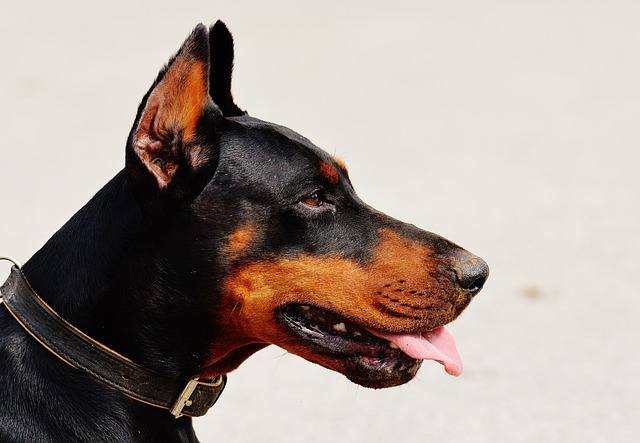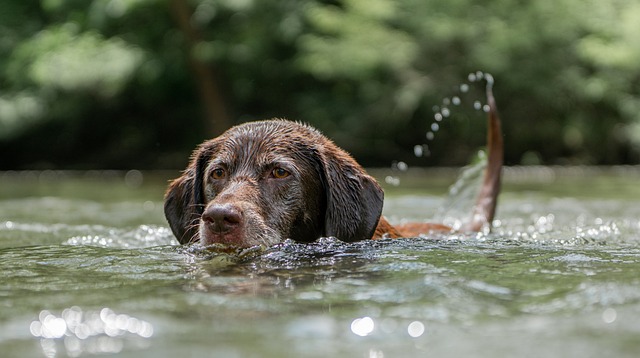Responding to Choking: Steps to take when a dog is choking, including how to perform the Heimlich maneuver and clear airways.
When a dog is choking, it is crucial to act quickly to prevent further harm or potentially save their life. The first step is to assess the situation and determine if the dog is indeed choking. Look for signs such as pawing at the mouth, gagging, excessive drooling, or difficulty breathing. If choking is suspected, proceed with caution.
To perform the Heimlich maneuver on a choking dog, stand behind them and wrap your arms around their waist. Make a fist and place it just above their navel.

Clearing the airways is vital in a choking situation. Carefully open the dog’s mouth and look for any visible foreign objects that may be causing the obstruction. If an object is easily accessible, use your fingers or tweezers to remove it. However, be cautious not to push the object further into the throat. Additionally, be mindful that a panicking or scared dog may bite out of reflex during this procedure. Speak softly and try to keep them as calm as possible throughout the process. Remember, prompt action can be the difference between life and death in a choking emergency.
• Assess the situation to determine if the dog is choking by looking for signs such as pawing at the mouth, gagging, excessive drooling, or difficulty breathing.
• If choking is suspected, proceed with caution and act quickly.
• To perform the Heimlich maneuver on a choking dog, stand behind them and wrap your arms around their waist.
• Make a fist and place it just above their navel while supporting their hindquarters with your other hand.
• Apply firm upward pressure with your fist in a quick and upward motion until the obstruction is dislodged. Repeat this movement if necessary.
• If the Heimlich maneuver doesn’t work, try applying pressure on their abdomen using your hands as an alternative canine version of the maneuver.
• Clearing the airways is crucial. Carefully open the dog’s mouth and look for any visible foreign objects causing obstruction.
• Use fingers or tweezers to remove accessible objects but avoid pushing them further into the throat.

• Speak softly and keep them calm throughout to minimize stress during this critical time.
Remember that acting promptly when a dog is choking can make all the difference in saving their life or preventing further harm.
Handling Seizures: Understanding what to do during a seizure episode and how to ensure the dog’s safety throughout the process.
During a seizure episode, it is crucial to stay calm and take immediate action to ensure the dog’s safety. One of the most important things to remember is to never restrain the dog or try to stop the seizure by force. Instead, try to create a safe environment by removing any objects or obstacles that could harm the dog during the convulsions. Clearing the area and providing a cushioned space can help prevent injuries. Additionally, it is important to avoid placing your hands or any objects near the dog’s mouth, as they may inadvertently bite down during the seizure.
Once the seizure begins to subside, it is important to keep a close eye on the dog and monitor its behavior. Some dogs may experience disorientation or confusion after a seizure, so it is crucial to ensure they are in a secure and comfortable area. If necessary, gently guide the dog away from any dangerous situations or hazards. It is also advisable to note the duration and intensity of the seizure, as this information can be helpful for the veterinarian in diagnosing and determining the best course of treatment. Remember, always seek veterinary attention after a seizure episode to ensure proper care and evaluation.
Providing CPR: Detailed instructions on administering cardiop
Administering cardiopulmonary resuscitation (CPR) is a crucial skill for every dog owner to possess. In a life-threatening emergency, knowing how to perform CPR can potentially save your dog’s life until veterinary help is available. Although it is essential to remember that CPR should not replace professional veterinary care, being familiar with the basic steps of this life-saving technique is invaluable.
To start, ensure the safety of both yourself and your dog. Move the dog to a flat surface, preferably on the floor.

What is CPR?
CPR stands for cardiopulmonary resuscitation, which is a life-saving technique used in emergencies to manually maintain blood circulation and provide oxygen to the body when a person or animal’s breathing or heart has stopped.
Can CPR be performed on dogs?
Yes, CPR can be performed on dogs. It is an important skill to know, especially in emergency situations where a dog’s breathing or heart has stopped.
When should I perform CPR on a dog?
CPR should be performed on a dog when they are not breathing or their heart has stopped. It is important to assess the situation quickly and determine if CPR is necessary.
How do I assess if a dog needs CPR?
Check for signs of breathing and a pulse. If the dog is not breathing and has no pulse, CPR should be initiated immediately.
How do I perform the Heimlich maneuver on a choking dog?
Stand behind the dog, place your hands just below the ribcage, and apply firm upward pressure towards the spine. This may help dislodge the object causing the choking.
What should I do if a dog is having a seizure?
During a seizure, it is important to ensure the dog’s safety. Move any objects out of their way, cushion their head, and do not attempt to restrain or hold them down. Do not put your hands near their mouth as they may inadvertently bite.
Should I try to stop a dog’s seizure?
It is generally not possible to stop a seizure once it has started. Focus on keeping the dog safe and monitor the duration of the seizure.
How can I clear a dog’s airways?
To clear a dog’s airways, gently tilt their head back and extend their neck. Use your fingers to sweep any visible obstructions or foreign objects out of their mouth.
How long should I perform CPR on a dog before seeking veterinary assistance?
CPR should be performed for about two minutes before seeking immediate veterinary assistance. Time is of the essence, so it is crucial to contact a veterinarian as soon as possible.
Can performing CPR on a dog save their life?
Yes, performing CPR on a dog can help save their life in emergency situations where their breathing or heart has stopped. However, it is always recommended to seek professional veterinary care as soon as possible.


